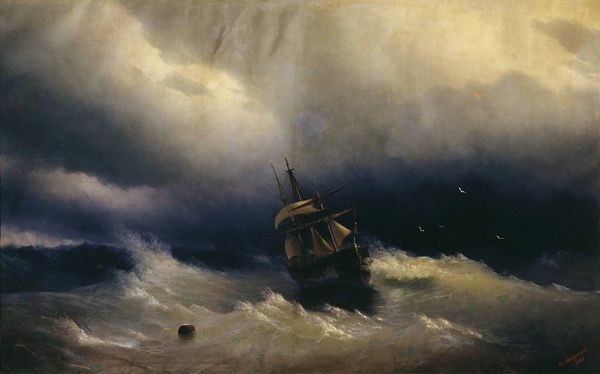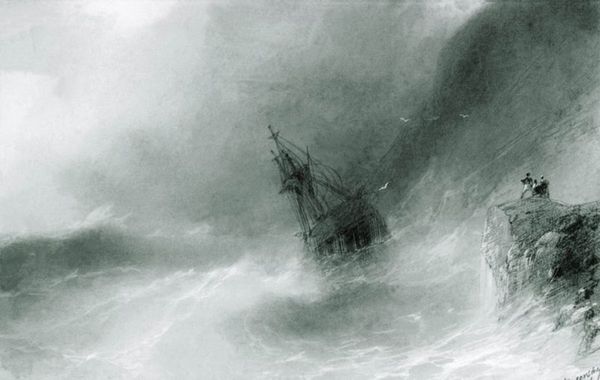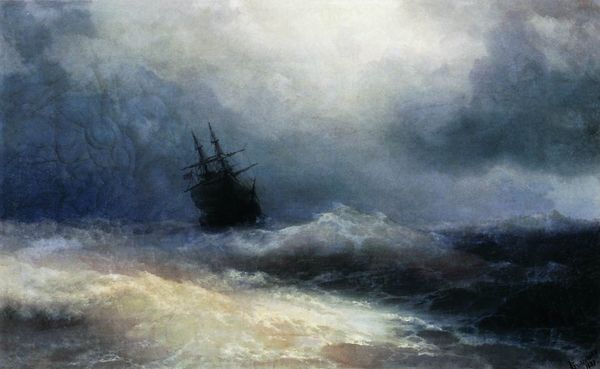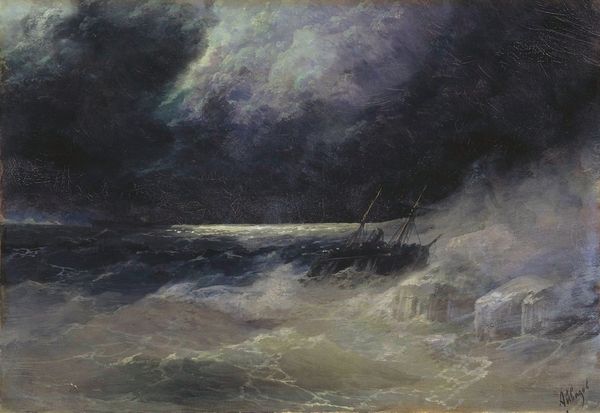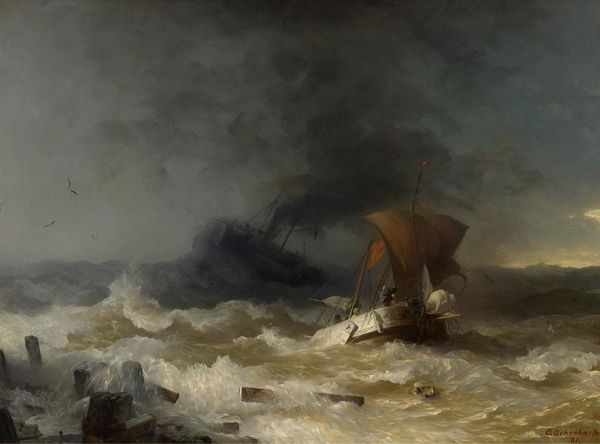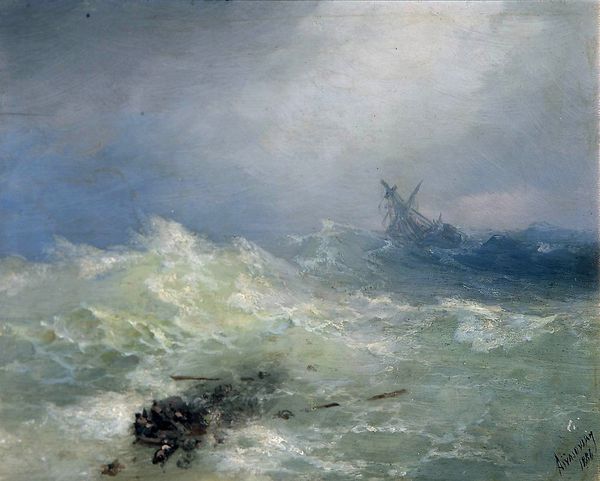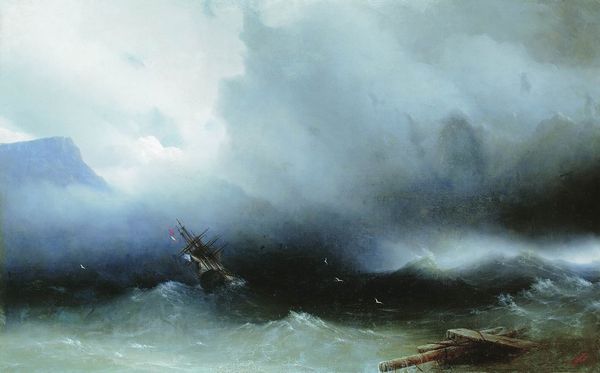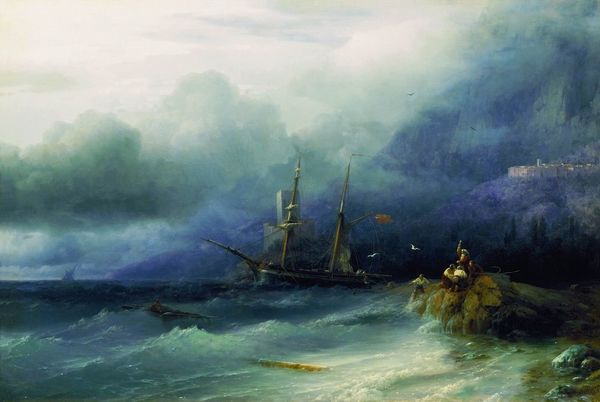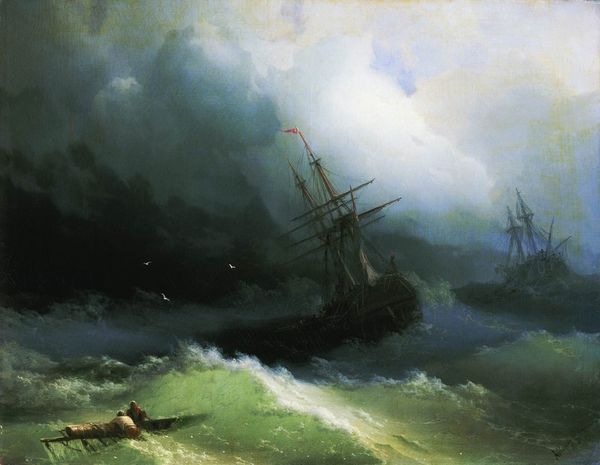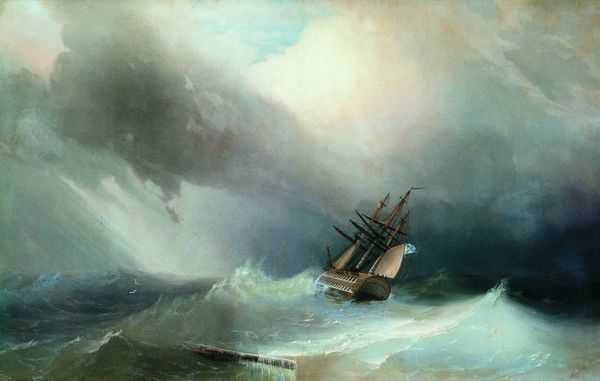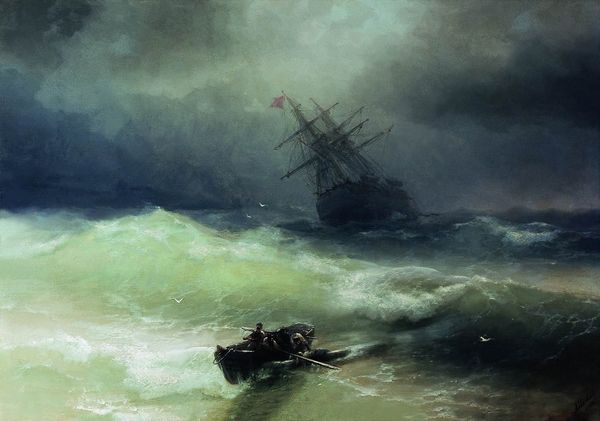
Copyright: Public domain
Curator: Let’s turn our attention to Ivan Aivazovsky's drawing "High Seas," created in 1874. He masterfully used graphite and charcoal to capture this seascape. Editor: Oh, wow. My first thought? Intense! It’s like peering into a turbulent dream. You can almost feel the spray on your face, you know? Like you’re right there on that boat, clinging on for dear life. Curator: Aivazovsky, though born in Crimea, spent much of his life exploring the relationship between Russia and the Black Sea, as an Armenian artist living within the Russian Empire. This work, as many of his seascapes, can be read as a commentary on power, control, and the sublime force of nature. The lone vessel tossed about becomes a metaphor. Editor: That makes total sense. I love how he’s managed to convey such raw power using essentially just shades of gray. It reminds me of a stormy night, with the moon hidden behind furious clouds and just glimmers of light catching on the wave crests. I'm getting romantic vibes here. Is that the right word? Curator: Absolutely. It aligns with the Romanticism movement that permeated the era, emphasizing emotional intensity, individualism, and the awe-inspiring power of the natural world. Aivazovsky positions humanity – here embodied in the ship – against the immensity and unpredictability of nature. And there is something undeniably gendered in that struggle to master nature. Editor: So it is, as if the sea is a rebellious force, defying taming! I feel a certain kind of drama and tension, you know? And the birds soaring above it all, what’s up with them? Like the universe, they don’t give a damn. Curator: Those birds punctuate the scene with an ironic detachment. They have mastery the sailors lack; they’re observers, not participants. The piece serves as an acknowledgement that even in moments of technological advancement, humanity can be at the mercy of its environment. And if we zoom in on the figures, it is mostly males sailors at work... We can unpack all sort of questions about social class, access and exclusion here. Editor: Food for thought, right? Aivazovsky has somehow put me in the thick of it, as if I was an uninvited guest, stuck in an uncanny situation. A powerful experience overall. Curator: It truly highlights the complexities inherent in representations of nature and our relationship with it. The questions this artwork triggers regarding gender, mastery, social classes and technology are countless.
Comments
No comments
Be the first to comment and join the conversation on the ultimate creative platform.
